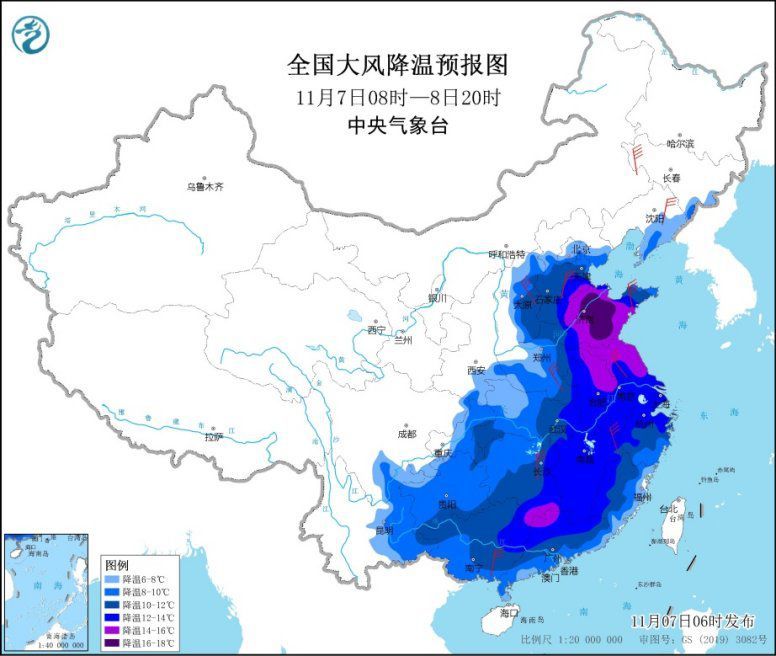my country News Service, November 7th. According to the website of the Central Meteorological Observatory, the cold wave continues to affect the central and eastern regions of China, with heavy snowfalls in North and Northeast China and other places.
Yesterday, there was obvious rain, snow and strong wind cooling in the northeast of Huanghuai, North China
From 08:00 yesterday to 06:00 today, there was snow or sleet (rain to snow) in central and southeastern Inner Mongolia, Shaanxi, Shanxi, Hebei, Beijing, Tianjin, northwestern mountains, northern and western Henan, and western Liaoning. Shanxi In the east, western and southern Hebei, Beijing, southern Tianjin, northwestern mountains and other places, the precipitation is 20-30 mm, and local areas such as Baoding and Shijiazhuang in Hebei, Fangshan in Beijing, Liaocheng and Dezhou in Shandong, etc. 35-49 mm; this morning, Inner Mongolia The depth of snow in the central and eastern part, northwestern Shanxi, northern Hebei, Beijing, and western Tianjin is 2-10 cm, and the local area of Wutai Mountain in Shanxi, Yuxian County of Hebei, and Yanqing of Beijing is 15-26 cm.
At 5:00 today, compared with 5:00 yesterday, affected by the cold wave, 8-12℃ cooling occurred in the eastern part of Northwest China, northern China, central and western Huanghuai, northeastern China, and Sichuan Basin. In western Shanxi, northern Hebei, northwest Beijing, central Liaoning, etc. The drop rate exceeds 16°C; some of the above-mentioned areas are accompanied by strong winds of magnitude 6 to 8, with gusts of magnitude 9 to 10, and gusts of magnitude 11 to 13 at individual sites in central and western Henan. At 5 o’clock today, the temperature 0℃ line is located in the north of Shandong, the south of Hebei, the south of Shanxi, and the south of Shaanxi.
The cold wave continues to affect the central and eastern regions of my country
Affected by the cold wave, it is expected that from 08:00 on November 7 to 20:00 on November 8, there will be a strong wind cooling process in North China and its southern regions: the temperature in most areas will drop by 8 to 10 degrees, the southeast of North China, the central and eastern Huanghuai, In parts of Jianghuai, the central and eastern Jiangnan, and the northern part of South China, the drop rate can reach 12~14℃, and the local area is above 16℃, accompanied by 4~6 northerly winds and gusts of 7~8; after cooling, the minimum temperature is 0℃ The line is located in the northern part of Jiangsu and Anhui, southern Henan and northern Sichuan. The lowest temperature in central and northern South China will drop below 10°C (Figure 1 and Figure 2). From the morning of the 7th to the night of the 8th, the Bohai Sea, the Bohai Strait, most of the Yellow Sea, most of the East China Sea, the Taiwan Strait, the east of Taiwan, the Bashi Strait, the northern waters of the South China Sea, and the Beibu Gulf will have levels 7-9 and gusts of 10~ 11 strong winds. For this reason, the Central Meteorological Observatory continued to issue yellow cold wave warnings and sea gale warnings at 06:00 on November 7.
Figure 1 National Gale Cooling Forecast Map (November 7th 8:00-8th 20:00)
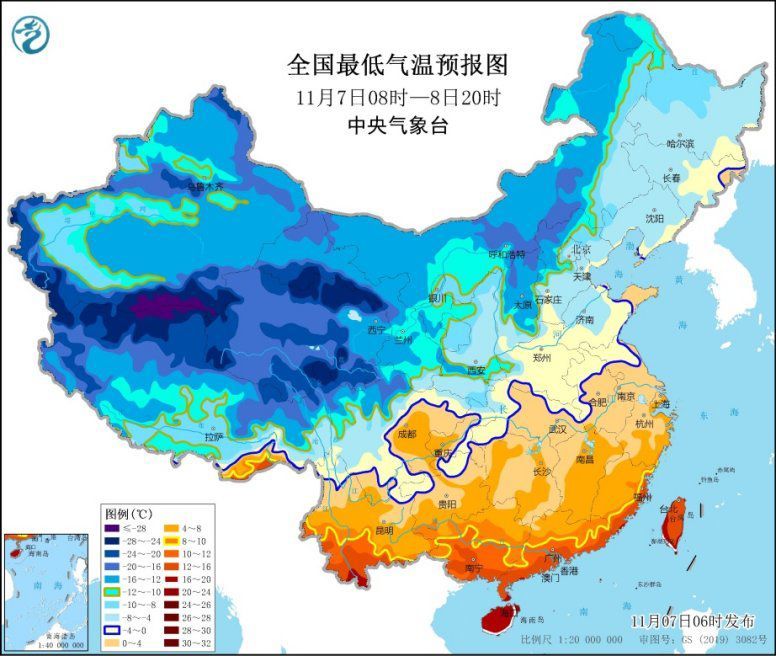
Figure 2 National minimum temperature forecast map (from 08:00 on November 7 to 20:00 on November 7)
Strong snowfall in North and Northeast China and other places
It is expected that from 08:00 on November 7 to 08:00 on November 8, there will be heavy snowstorms in parts of southeastern Inner Mongolia, eastern Hebei, Tianjin, northwestern Shanxi, central and western Liaoning, western Jilin, and southwestern Heilongjiang. Among them, eastern Hebei , The northwestern part of the mountain, the southeastern part of Inner Mongolia, the central and western part of Liaoning, the western part of Jilin, etc., there are heavy snowstorms or extremely heavy snowstorms (20-40 mm). In some of the above-mentioned areas, the newly added snow depth is 5-15 cm, and the local area can reach more than 20-40 cm (Figure 3). For this reason, the Central Meteorological Observatory continued to issue a Blizzard orange warning at 06:00 on November 7. From 08:00 on the 8th to 08:00 on the 10th, the heavy snowfall area moved to the northeast. In parts of southeastern Inner Mongolia, central and northern Liaoning, western Jilin, and central and western Heilongjiang, there were blizzards to severe blizzards and local blizzards.
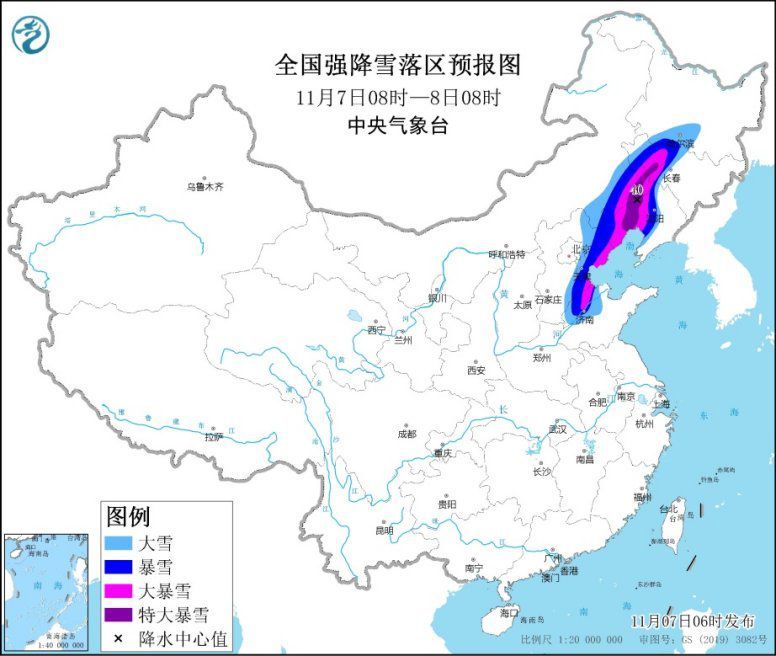
Figure 3 Forecast map of strong snowfall areas across the country (from 08:00 on November 7th to 08:00 hours on November 8th)
3. Specific forecasts for the next three days
From 08:00 on November 7 to 08:00 on the 8th, there were heavy snowstorms in parts of southeastern Inner Mongolia, eastern Hebei, Tianjin, northwestern mountains, central and western Liaoning, western Jilin, and southwestern Heilongjiang. Among them, eastern Hebei, There are heavy or extremely heavy snowstorms (20-40 mm) in northwestern Shandong, southeastern Inner Mongolia, central and western Liaoning, and western Jilin. There were moderate to heavy rains in some areas of eastern Huanghuai, eastern Jianghuai, eastern and southern Jiangnan, and northern southern China, and local heavy rain (50-60 mm). In parts of northern Liaoning, western Jilin, northern Shaanxi, most of Anhui, central and eastern Hubei, and central Hunan, there are winds of magnitude 5 to 7, and gusts of magnitude 8 (see Figure 4).
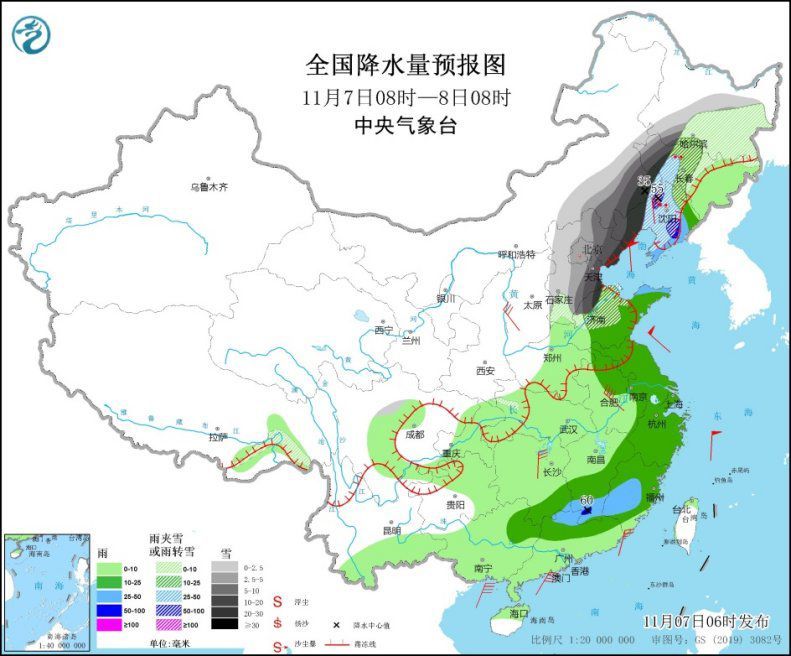
Figure 4 National precipitation forecast map (from 08:00 on November 7th to 08:00 on November 8th)
From 08:00 on November 8th to 08:00 on the 9th, there was moderate to heavy snow in most of the southeastern and northeastern areas of Inner Mongolia. Among them, there were blizzards or heavy snow in parts of southeastern Inner Mongolia, central and western Heilongjiang, western Jilin, and central and northern Liaoning. , A local blizzard (30-40 mm). There were moderate to heavy rains in parts of eastern Heilongjiang and northeastern Jilin. There are winds of magnitude 4 to 6 in eastern Inner Mongolia and western Northeast China. Among them, there are winds of magnitude 7 to 8 and gusts of magnitude 9 to 10 in parts of southeastern Inner Mongolia, northern Liaoning, and western Jilin (see Figure 5).
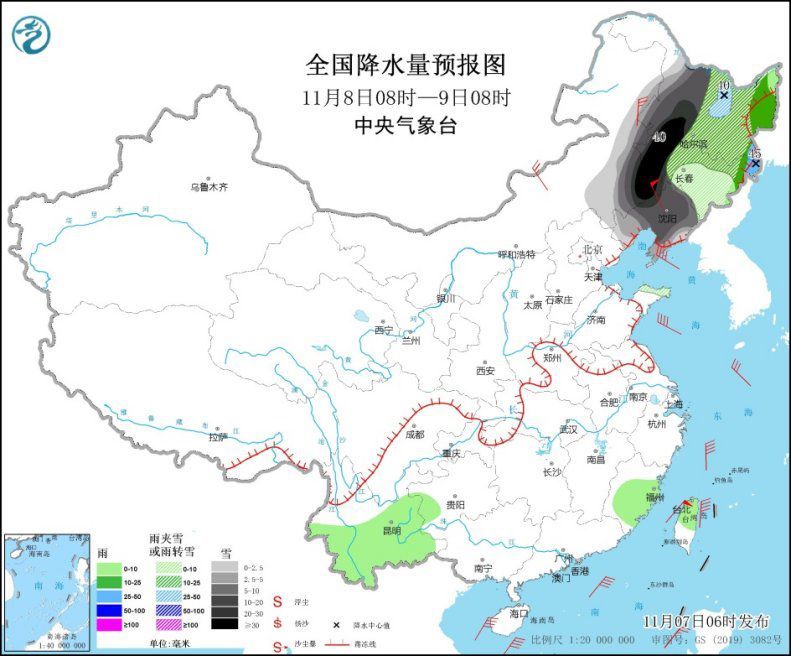
Figure 5 National precipitation forecast map (from 08:00 on November 8th to 08:00 on November 8th)
From 08:00 on November 9th to 08:00 on the 10th, there were light to moderate snow or sleet in parts of eastern Inner Mongolia and most of the northeastern region. Among them, there were heavy snow in parts of southwestern Heilongjiang, central Jilin, and northern Liaoning. , Local Blizzard (10-12 mm). In parts of central and southeastern Inner Mongolia, western Jilin and other places, there are winds of magnitude 4 to 6, and gusts of magnitude 7 to 8 (see Figure 6).
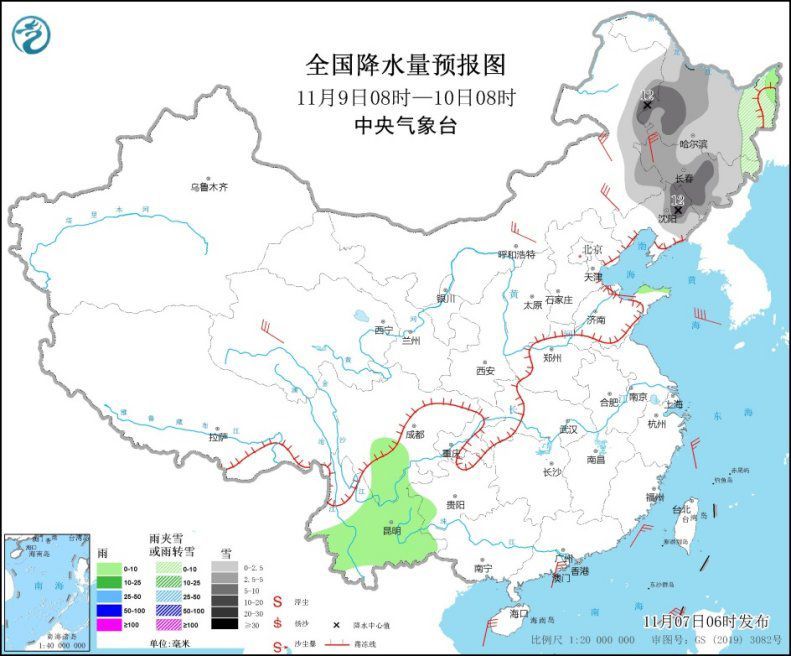
Figure 6 National precipitation forecast map (from 08:00 on November 9th to 08:00 on November 10th)
Influence and concern
1. From 7 to 8 days, the cold wave continues to affect the central and eastern regions. Pay attention to the adverse effects of high winds and cooling on energy supply, human health, epidemic prevention and control, and facility agriculture;
2. Pay attention to the adverse effects of rain and snow weather in North China, Northeast China and Inner Mongolia on transportation and urban operations;
3. Pay attention to the adverse effects of strong winds in the Bohai Sea, Yellow Sea, East China Sea and other sea areas on sailing vessels, platform operations, and coastal aquaculture.
【Edit: Chen Haifeng】
.
